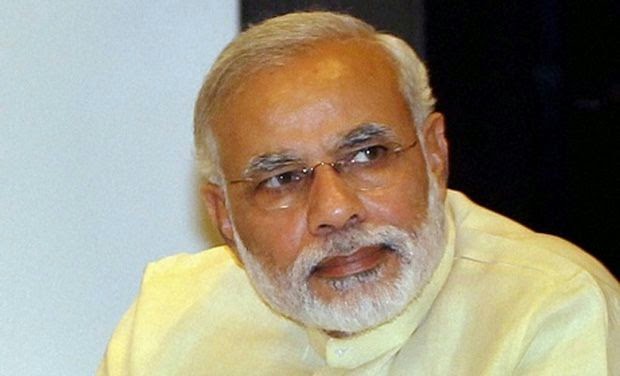 |
| It's Thatcher time for N. Modi. |
The coal industry, nationalized in 1947, was losing money at a horrendous rate; the government subsidy had risen to $1.3 billion a year. The industry desperately required rationalization; mines had to be closed and the workforce shrunk if there was to be any hope of revival. Scargill and his militants were unwilling to compromise. Mine pits could not be closed they said, no matter how large the losses. For them, it was not a battle over modernization but a class war.We all remember how things turned out: the coal miners went on strike hoping to break Thatcher, but the prevailing political-economic situation had moved on:
The strike began in March 1984. It was angry and sometimes violent -- thousands were arrested during its course. Not only miners who wanted to continue working but also their families were subject to constant intimidation. Police employed mounted cavalry charges to break up mass demonstrations...Now, consider modern-day India. Labor militancy has long been one of the stumbling blocks to modernizing the country. Resembling Thatcher-era Britain, coal is once again at the, well, coalface of this dispute. Given recurrent power outages in India, Modi seeks to privatize large swathes of the industry to make production more efficient. As you would imagine, the unionists are up in arms:
Despite the intense pressure and the disruption, the National Coal Board and the government held firm. It took a year, but the strike finally petered out, and in stark contrast to 1974, this time the miners' union capitulated. The government had won. The outcome meant a new era in the basic relationship of labor, management, and government -- in short, in how Britain fundamentally worked. The decades of labor protectionism -- which had cost the British economy heavily in terms of inflexibility, red ink, and lost economic growth -- were over.
Coal-fired power plants generate 60 percent of India’s electricity, except for when shortages lead to repeated blackouts. Outages shaved $68 billion or almost 4 percent off annual gross domestic product in the year ended March 2013, says the Federation of Indian Chambers of Commerce and Industry. Last week, Modi made a move toward ending shortages, winning partial passage of a bill that will allow him to end a 40-year government coal monopoly. The plan is to bring in more efficient private companies, which the coal unions say will mean job losses and they’ll fight him.As usual, unionists bear the brunt of the blame:
“Let them open up the sector, there will be strikes all across and large-scale violence,” said S.Q. Zama, secretary general at the Indian National Mineworkers Federation, a unit of the opposition’s Congress party-backed Indian National Trade Union Congress. The Indian National Trade Union Congress said all major unions would meet Dec. 17 to decide their response to Modi’s plan.
Economist Surendra Laxminarayan Rao says the government needs to get out of the coal business. “One of the biggest policy blunders of India has been the government taking control of the coal industry,” said Rao at The Energy and Resources Institute in New Delhi. “The coal shortage is not just because of Coal India’s incompetence and its primitive technology. The unions are majorly responsible,” he said. “There’s no choice for Modi except to overcome them. The unions, fearing private companies will cut wages and benefits as well as jobs, said they have been seeking talks with minister Goyal for the past two months.The essential difference between Thatcher and Modi is that the former wanted to close down state-owned coal plants while the latter want to privatize them. That is, Thatcher obliterated coal as a power source, whereas Modi wants to expand its output. That said, the means to achieving their different goals is identical--the coal unions must be brought to heel.
Can Modi break the coal miners' balls? That is the question.
UPDATE: Coal miners' unions are making plans to strike on January 6.
Join This Site Show Konversi KodeHide Konversi Kode Show EmoticonHide Emoticon